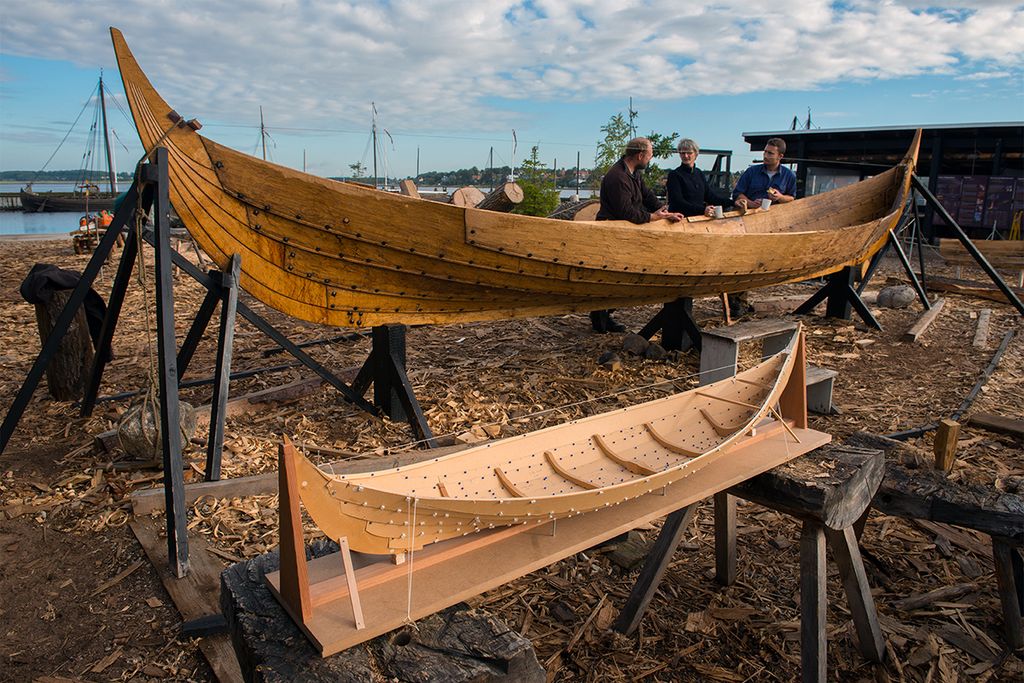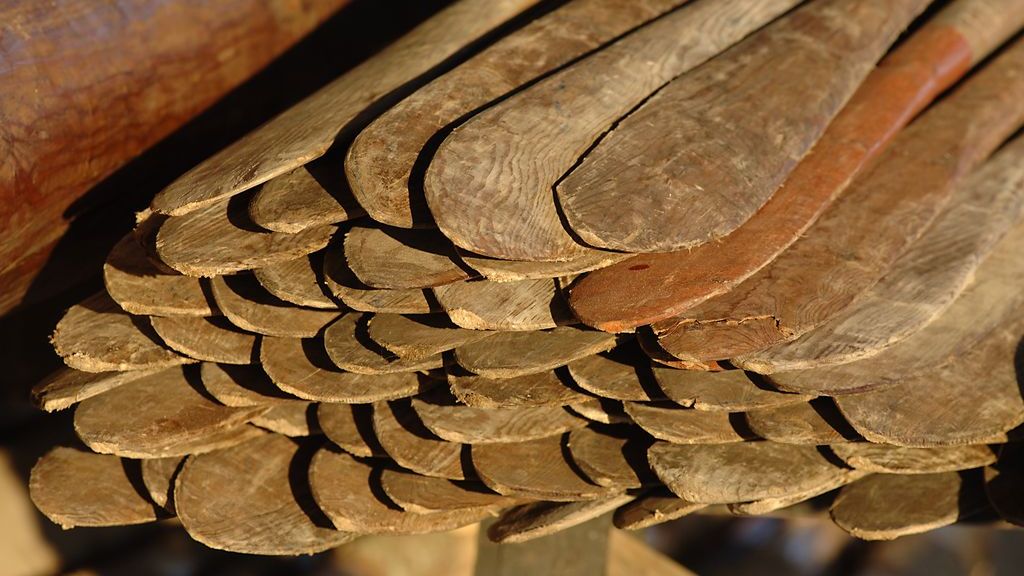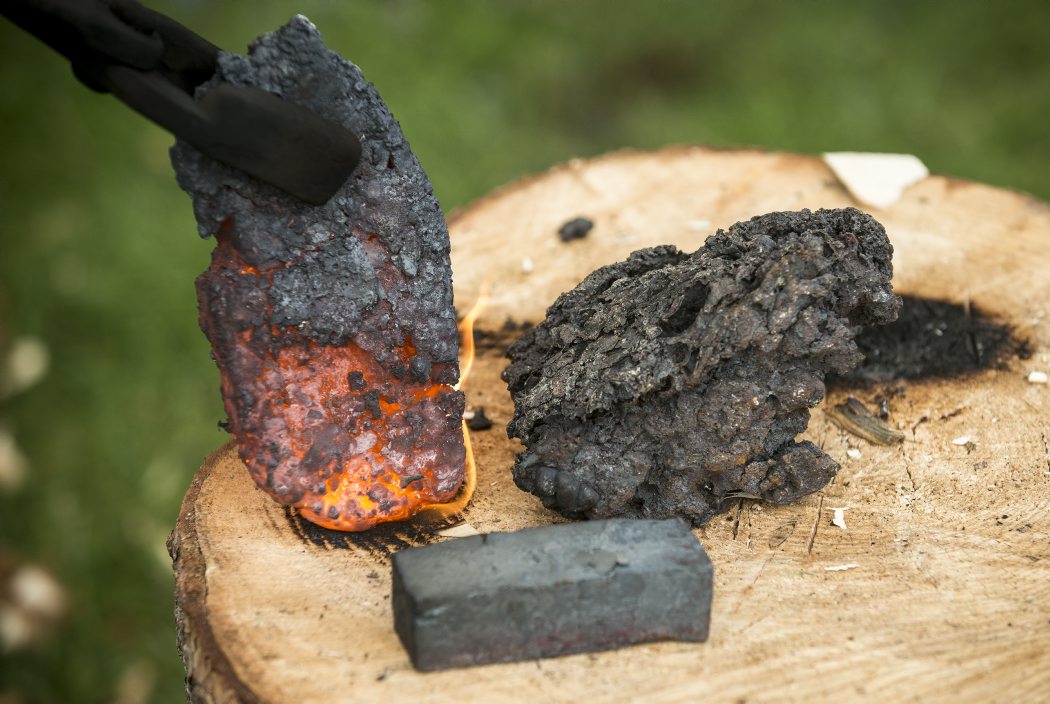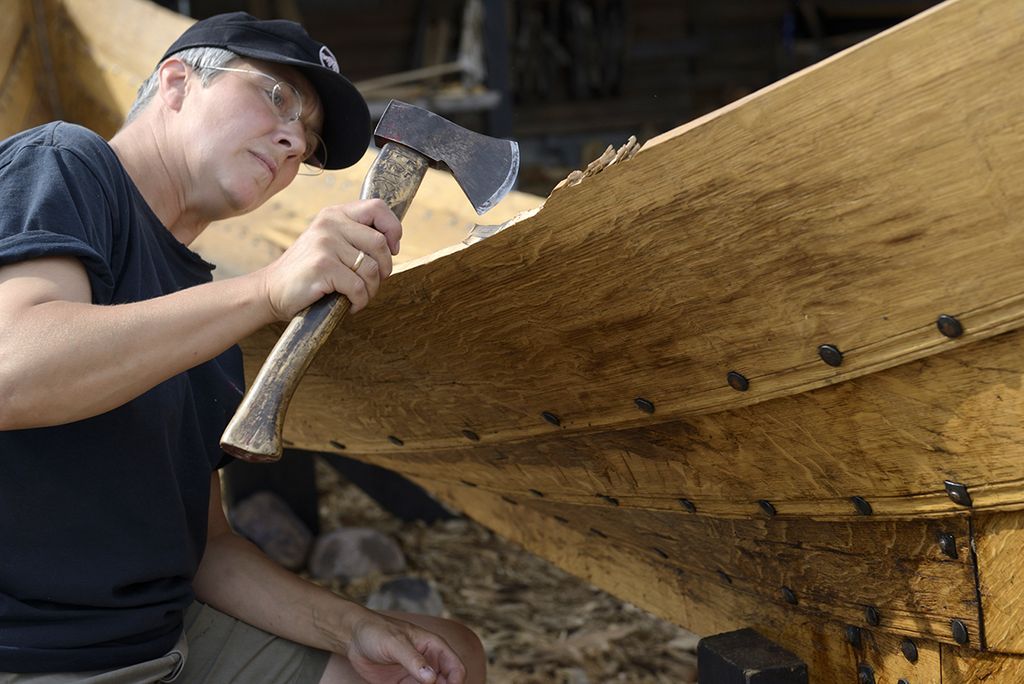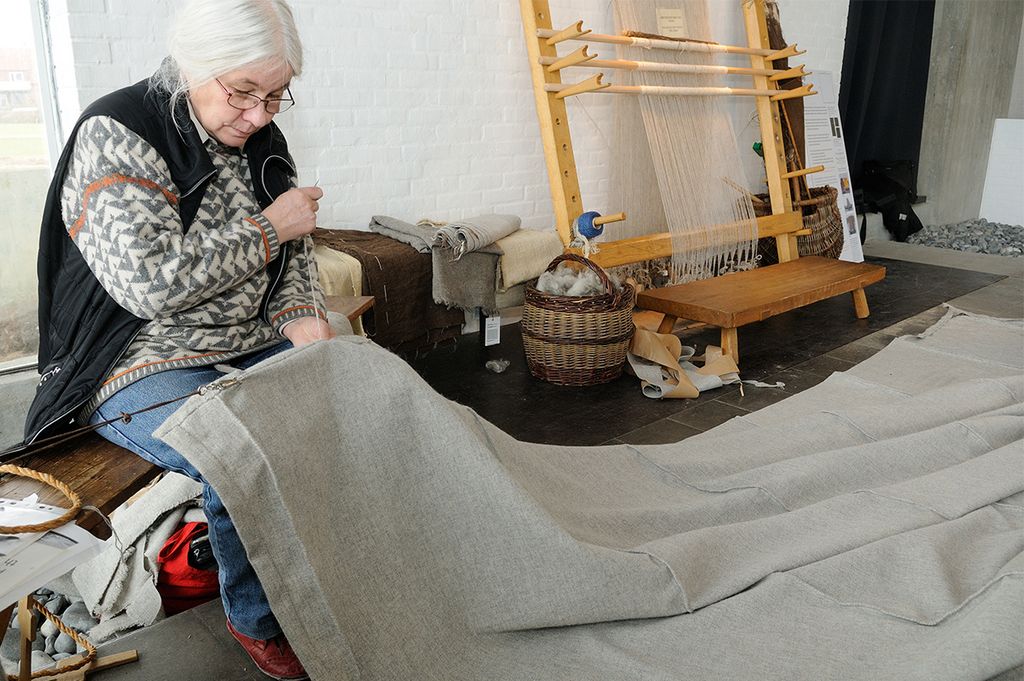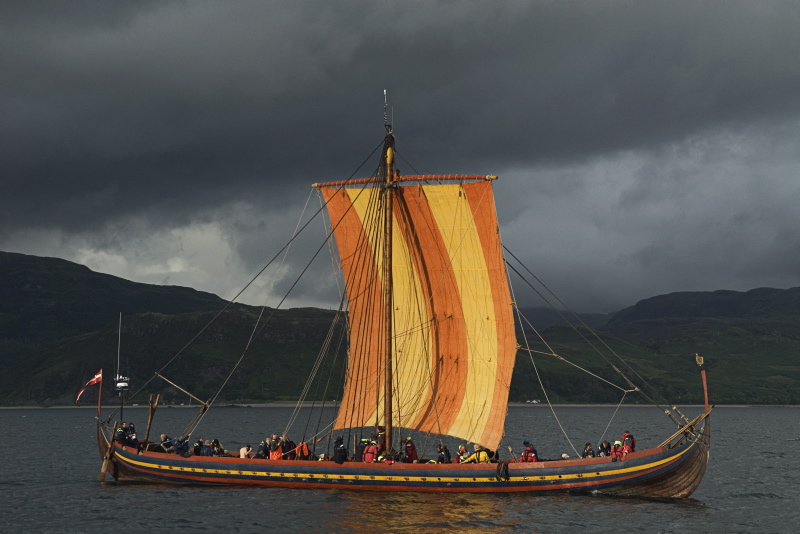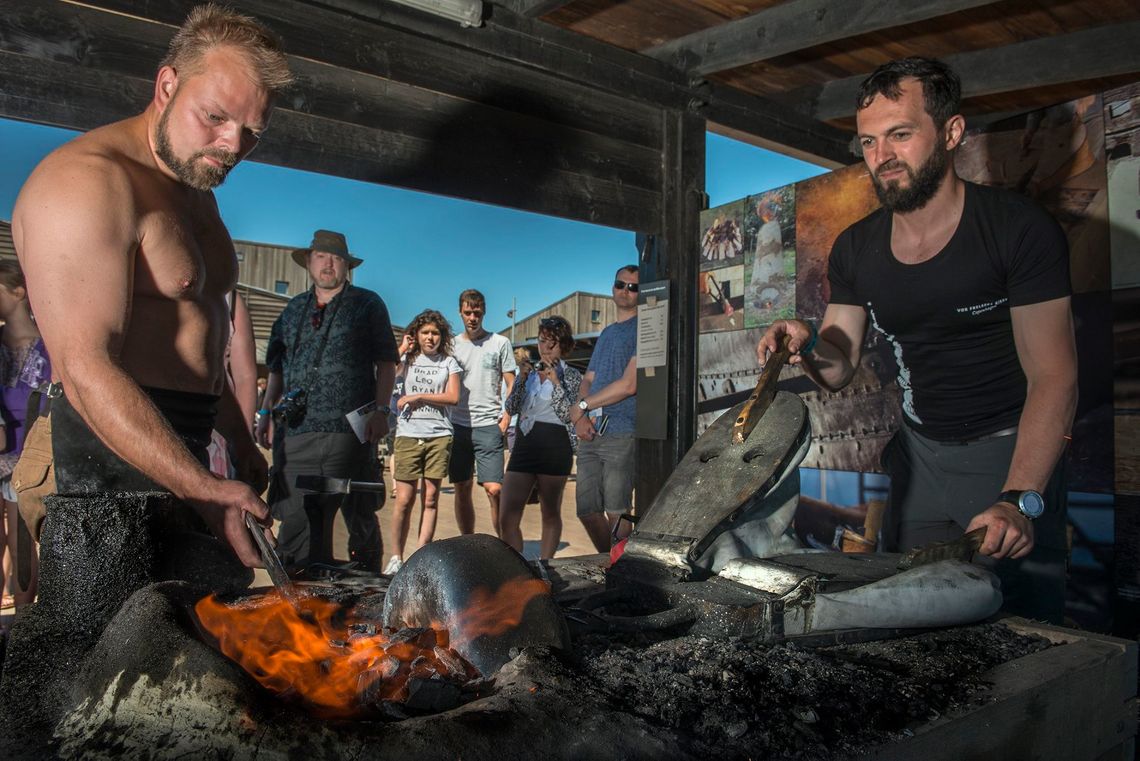Experimental archaeology
The Viking Ship Museum conducts experimental archaeological research in order to investigate the techniques, methods and conceptual understandings utilised while building and using the boats and ships of the past. A ship find is a source of comprehensive and complex knowledge relating to cultural history. We regard it as our task to discover as much of this knowledge as possible, allowing us to achieve greater knowledge of the individual ship’s construction and equipment. Furthermore, we investigate the ship’s sailing characteristics and illustrate a number of cultural-historical issues that concern the interaction between ships and society in the past. The reconstruction and testing in full scale is therefore ideally included as an element in the overall analysis of archaeological, historical, ethnographic and iconographic evidence related to the specific ship find.
The work takes its point of departure in the idea that every ship was originally created and utilised in a complex set of interactions between people with different competencies and attitudes to the ship. These people have left a variety of traces on the ships, some of which are very concrete, such as tool marks that have been left as primary sources from the hand of the ship-builder. Others are more abstract, such as the ship’s form and nature, and these can tell us about the ship’s function, the waters in which it sailed, the ‘contractor’s’ wishes and the intentions that the boatbuilder had for the ship’s sailing characteristics. Ships can tell us about ship technology at the time, and the use and understanding of materials. They can also provide food for thought about time consumption, resources, organisation etc.
Nobody has the qualifications to interpret all this information alone. Gathering information from a ship find therefore depends on cooperation between people with a wide range of abilities, experience and approaches. The method of examining and questioning must be constantly developed and refined by a broadly comprised team. Together, this team can process a comprehensive and very diverse body of source material and can develop ideas on a wide range of issues, always with the bigger picture in mind. It is the process and the questions it produces that are significant for the analysis.
The actual product, the reconstruction, can be described as an historical hypothesis. It does not represent the definitive truth in terms of how the original looked or functioned. Rather, it presents a picture which acts as a catalyst, and a tool that can be used to explore the process, which highlights new issues and correlations, and allows us to see and interpret the source material afresh.
